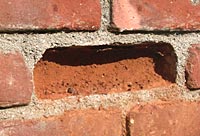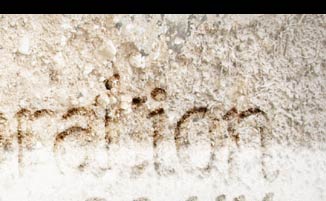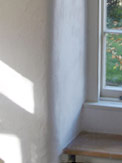Restoring a building's efficiency involves understanding what took Millenia to learn but has been eroded in the last century. Time to halt the damage.
Edward Scutt has been attributed an 'expert' in his field (quote from conservation officers in Wiltshire and Hampshire) gained by years of research and experimentation on older structures.
- "... Lend me your ears"
Love them or hate them the Romans knew a thing or two about building.
Completed in 125 AD the Romans built the Pantheon rotunda walls in 4-5 years and another 4-5 years to add the unreinforced concrete dome that remains to this day the largest example in the world. It could perfectly fit a 142 ft diameter sphere within it. The 'concrete' was made from mainly relatively weak lime and volcanic ash combined with clever additional materials and techniques. Yet with all our technological advances in modern concrete, it's superior strength gains would not be suitable nor last.
If you are lucky enough to own your own villa, the original humble wall maker knew far more about old building design than given credit - acquiring simple skills passed down by past generations. Subsequently these walls may have been subjected to the wrong materials (Naturally Hydraulic Lime based products, cement based renders, inappropriate pointing, waterproofing and tanking, impervious paints and linings etc) with rare consideration given to what it does to the living environment within. All done without proper recognition for how the walls were built or understanding of how they can work properly if kept breathing efficiently.
Thank you for demonstrating your proper interest - read on 'countrymen and countrylasses' to hopefully gain a few more pointers .....
Looking after Period and Listed Buildings
Various questions repeatedly surface regarding older buildings. Modern materials suit modern homes, and occasionally older ones, but general the traditional coatings and mortars, made with Lime Putty, were used with good reason. The widespread use of cement based products over the last century have proven to cause more problems than they fixed:
- Which type of lime should be used?
Conservation experts promote the use of the more permeable lime putty / fatlimes due to their softer and closer match to the old building materials. NHL lime products require less skill and understanding to apply and whilst the end result looks similar to the untrained eye they will not help the building breath but as a weak version of cement (and similar to work with) they will produce a barrier not a bridge for capillary processes to pull moisture out of walls.
- The do's and don'ts of listed and period properties
If you have a listed property you should be cautious of altering plaster with even just a skim of any plaster be it traditional lime putty or bagged 'lime' products. You may need permission as you are changing the look and makeup of a wall and such changes could result in a fine, prosecution and enforcement to put back to how it was originally. This could mean considerable additional expense running into many thousands of pounds due to the removal of tougher plaster, and as there are no time limits for enforcement you could be caught out many years after the works were carried out. You could also be invalidating your building insurance as the upset inappropriate materials causes is well documented as reason to reject claims later on.
Edward has many years of experience liasing with local conservation officers and what they favour so it may worth be checking before you commit to any restoration work or repairs to older properties.
- Not brittle NHL/Hydraulic readymix
He does not favour using the dry bagged ready mixed 'traditional' NHL lime products used by so many plasterers and general builders for their convenient 'just add water and apply to set hard' - preferring to personally mix the purer fat lime putties and porous crushed stone to reproduce the traditional more effective plasters and renders historically used to build and finish most older buildings. The resulting air dried work is softer and more permeable and regulates moisture better inside and out and takes the building back to how it was when built and dry the walls out. This work and care does take a bit longer (and this approach is favoured by conservation experts) but who wants quick cover ups on their properties? If you have a listed property you are bound by certain restrictions including any change in apperance and this includes plaster surfaces.
- FAQs
Why Cement renders don't work for older properties?
How can I tell if renders are failing?
Can Lime Renders and Lime plasters be mechanically sprayed onto walls?
Are there lime plasters to insulate solid damp walls?
Can minor tests be done to suspect render?
Why can Cement pointing can cause extensive damage?
Why are Lime based products better for the softer building materials?
Why is my cement render cracking?
Why don't masonary paints work?

∧ Chalk damage caused by hard impervious cement pointing
Why Cement renders don't work for older properties?
The old thick walls of cob, brick stone or rubble infill were designed to 'breath' excessive moisture out by capillary action.
Cob Buildings were the normal method of construction for most buildings from the 15th century and went on until the end of the 1800s when it was widely replaced by brick, although it has seen a revival in recent years due to it's unique yet affordable properties.
If moisture is wicked towards the surface of a wall but meets a layer of non porous cement render (or even non breathing masonary paint) it cannot escape so the wall gets progressively damper. If rain water is getting in through cracks or moisture is rising up from the foundations the situation gets worse. Read more »
How can I tell if renders are failing?
Often render will fail because it has been applied (often to keep the elements out) to a material that it can't bond onto eg cob or soft stone. Two different materials will have different thermal movement. A cement render will expand when it gets warmed, yet a cob wall will contract so no matter how good the 'bond' was when it was applied it will not remain so over time. The two different materials will also encourage moisture to condense at the point where the two materials meet where it will then perculate down the wall, where it can't get out as it's trapped behind the cement render. It will also be prone to freeze in cold snaps, and when the ice expands it will force the render outwards, and cause further cracking for rain water to get in - with scope for more frosting damage. Eventually the void will be sufficient to enable extensive rinsing out of the cob and potential collapse. Read more »
Can Lime Renders and Lime plasters be mechanically sprayed onto walls?
Yes they can. Spraying plasters and renders onto walls is widespread all over Europe but as yet is not widely used in England. It is actually a highly efficient, quick way of forcing the material on at high pressure so negates the need for pressure floating when applied traditionally using a plastering trowel. It is similar in principal to hand harling or pargetting and done carefully with a small nozzle and masking results in minimal wasting of material or mess yet provides an excellent rough key for subsequent layers. The resulting rough cast finish also aids water dispersion through increased surface area - though the top layer can be smoothed if preferred. Using a porous agregate and not sand (which is not permeable or traditional ) with matured lime putty will also pull the moisture out like blotting paper and is closer in make up to the old traditional lime renders and plasters found on many older buildings.
Contact Edward to find out more about this specialist method of application as it is not widely used in England yet as the case studies demonstrate can be used to great advantage to solve ugly damage or highlight features whilst helping breathability !
Are there lime plasters to insulate solid damp walls?
Any bagged 'breathable' lime plasters should be treated with suspicion as they use NHL or hydraulic lime (and sometimes other additives) to achieve a set when water is added. These can result in a less porous harder barrier to the breathability of the wall. I have recently been adding cork granules to my porous lime plaster to naturally increase the insulation performance of the plaster layer.
Can minor tests be done to suspect render?
Often render can look fine from the outside. When removed in sample patches a very different picture can emerge. Often whole walls get rendered to hide relatively minor issues as getting edges of cement render to feather in smoothly (and last) is quite tricky. Like getting oil to blend with water - the two materials are not compatible and were never designed to be sealed surfaces trapping water in.
Why can Cement pointing can cause extensive damage?
The general consensus is a mortar should be softer than the surrounding brick or stone. Moisture trying to escape from a wall will take the easiest path. Inpermeable strong cement mortars will not allow any moisture movement and so it will be forced into the bricks / stonework. Evaporation will cause excessive salts to build up on the surface and the saturation will freeze.
 As is does so it will fracture the surface and this will break away (commonly known as spalling). Once the tougher outer face of a brick is removed in this way even more moisture will collect in the inner brick and rapidly erode the brick. In fact a 'soft or weak' Lime mortar allows moisture to move through it and can additionally 'suck' it out of the surrounding substrates so the stone or brick should remain dryer. Lime mortars must be correctly gauged to ensure it has maximum porosity. Read more »
As is does so it will fracture the surface and this will break away (commonly known as spalling). Once the tougher outer face of a brick is removed in this way even more moisture will collect in the inner brick and rapidly erode the brick. In fact a 'soft or weak' Lime mortar allows moisture to move through it and can additionally 'suck' it out of the surrounding substrates so the stone or brick should remain dryer. Lime mortars must be correctly gauged to ensure it has maximum porosity. Read more »
New Lime pointing should also be done with correct detailing: to correct depths and compaction (initially and as it sets), then finished in the correct manner to allow maximum evaporation - normally a soft rounded 'weathered' profile. Read more »
Why are Lime based products better for the softer building materials?
Apart from often being better for the environment (less energy required to produce lime products) they are often better for the buildings. This is due to their yield with a building. Lime putty renders have the ability to reseal small cracks themselves, but also expand and contract at similar rates to cob, so cracks tend not to be formed. Reinforcing the render or plaster with products such as hair or modern fibre also helps to keep it intact. More information on reinforcing can be found here ». Lime putty mortars enable moisture to be wicked into them and escape from the joints rather than forcing that moisture to escape through the surrounding materials. The problem with not promoting this is discussed in the question above.
Choosing the right type of Limes are also important as products like Dry Hydrated Lime or Hydraulic NHL limes are of limited use - where possible it is best to use Lime Putty as it produces more permeable results. Read more about lime types »
Why is my cement render cracking?
Cement render in large areas it liable to crack when it is warmed up because as a large inflexible slab it cannot cope with expansion over a large area. These cracks will then enable moisture to enter the wall and can cause more problems beneath - see above
Why don't masonary paints work?
Insurers are starting to reject claims for damage caused by inappropriate materials in the same way cement based products can also damage the building fabric of period buildings. Most modern masonary paints are designed to prevent moisture passing through them. This works fine if your walls never get damp, but in the same way the paint prevents water getting into the wall, it also stops it escaping.
Silicate based paints, or traditional lime washes are known to be the most porous finish and better for maximum breathability as they add a further more porous layer to the render or plaster. They can look blotchy when damp but show they are pulling moisture out not hiding or diverting it elsewhere.












